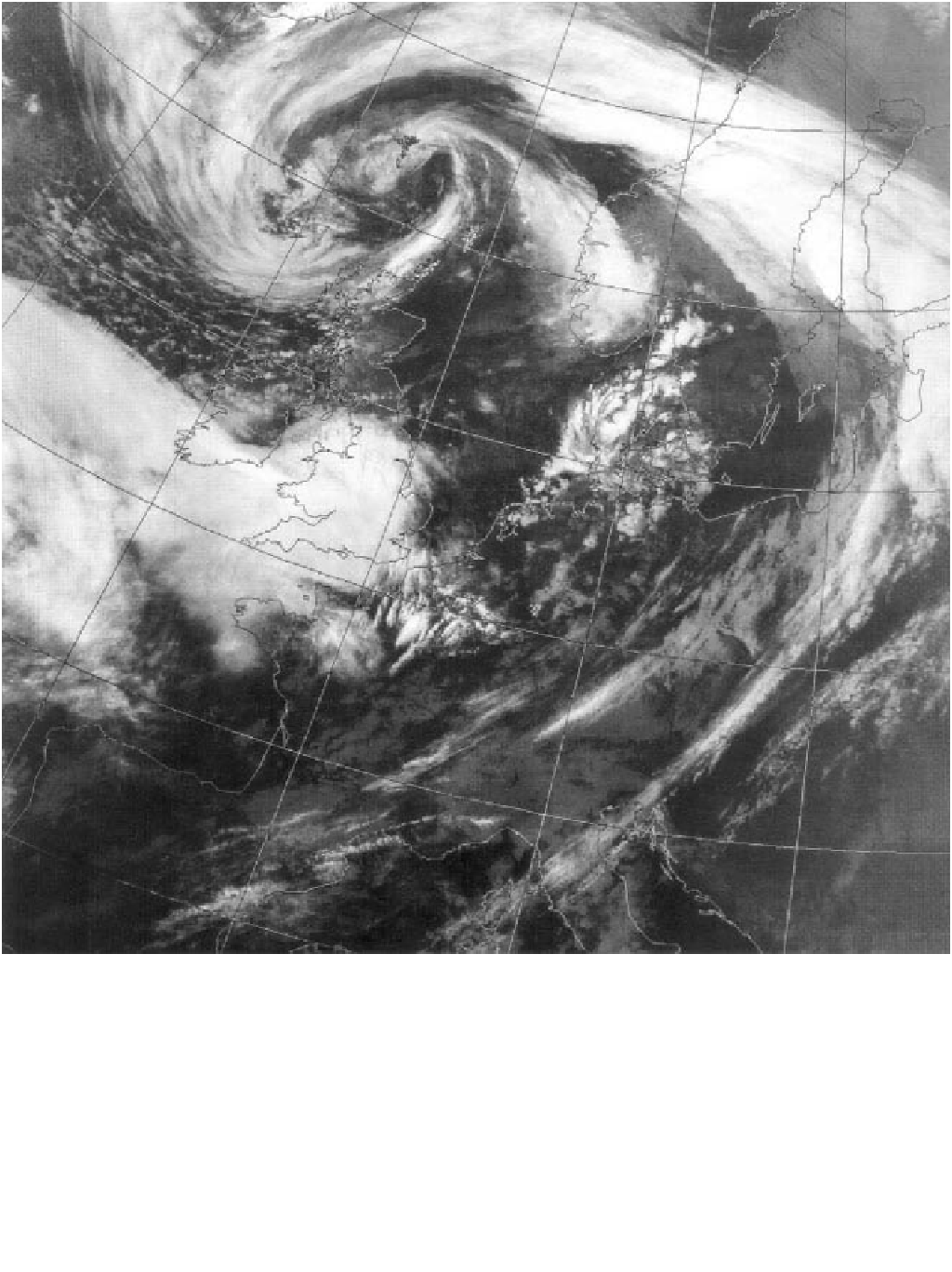Geoscience Reference
In-Depth Information
Plate 6.1
The characteristic cloud spiral around a mid-latitude cyclone centred to the north-west of Scotland. Image taken in
the infra-red waveband on 29 October 2000 at 15.06 UTC. The cloud developing to the south-west of Britain indicated a low-
pressure system which gave the storm referred to in the box on p. 140.
Image: Courtesy of the Satellite Receiving Station, University of Dundee, and NOAA
obtained by comparing the northern and southern
hemispheres. In the northern hemisphere there are
extensive and irregular land masses. Much of the southern
hemisphere, by contrast, is ocean, except for the high ice
plateau of Antarctica, where very low temperatures are
experienced. As we might expect, the pattern is much
simpler in the southern hemisphere. A strong westerly
flow of cool polar air occurs even in the southern summer.
Conversely, in the northern hemisphere the flow is weaker
and more irregular, with major meridional air movements
and seasonal variations. The temperature differences
between pole and equator are less marked (about 30
C









































